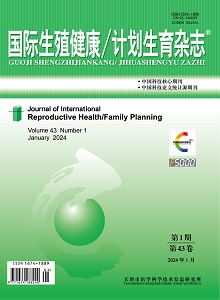Objective: To investigate the risk factors of unusable embryos after egg retrieval in vitro fertilization (IVF)/intracytoplasmic sperm injection (ICSI) in older women. Methods: A total of 569 egg retrieval cycles of older women who underwent IVF/ICSI assisted pregnancy in the Reproductive Center of Hebei Reproductive Health Hospital from January 2015 to December 2021 were retrospectively analyzed, including 95 cycles with unusable embryos as the study group and 474 cycles with usable embryos as the control group. According to the age, each group was divided into three subgroups: G1 group aged 35 to 39 years, G2 group aged 40 to 42 years, and G3 group aged 43 to 45 years. Ovulation induction and laboratory indexes were compared. Results: The differences of age, infertility years, body mass index (BMI), basic follicle-stimulating hormone (FSH), basic estradio (E2), anti-Müllerian hormone (AMH) and antral follicle count (AFC) on the start day in the corresponding subgroups between the two groups were not statistically significant (all P>0.05). There were significant differences in the level of luteinizing hormone (LH) on the trigger day between G2 subgroups (P<0.05). On the trigger day, the differences in the E2 level and follicular output rate (FORT) between G1 and G2 subgroups of both groups were statistically significant (all P<0.05). The differences of preponderance follicle count (PFC) on the trigger day among the three subgroups of both groups were statistically significant (P<0.05). There were no significant differences in gonadotropin (Gn) dosage, Gn days, trigger action time, trigger day progesterone (P) level and trigger day E2/PFC among 3 subgroups of both groups (all P>0.05). Meanwhile, the differences in the number of eggs obtained, the number of MⅡ eggs, the total number of fertilization, the total number of cleavage, the number of 2PN and the number of 2PN cleavage statistically significant (all P<0.05). Interestingly, Logistic regression analysis showed that the infertility year was a risk factor of unusable embryos after egg retrieval, while PFC on the trigger day was a protective factor. Conclusions: In IVF/ICSI assisted pregnancy for older women, the occurrence of non-transplantable embryos will increase with the increase of infertility years, while the increase of PFC on the trigger day will reduce the risk of non-transplantable embryos.

